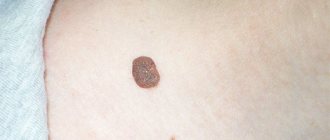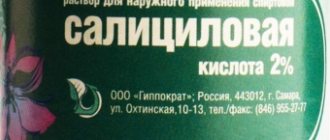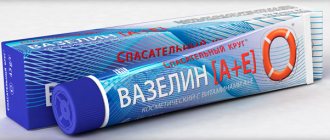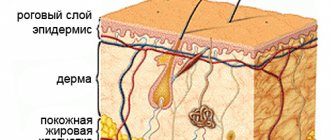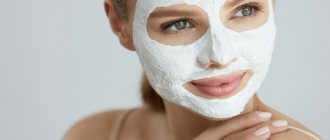There are several types of skin, one of which is mixed or combination. This is the most common type of dermis (about 80% of teenagers and 40% of people aged 18 to 22 have it). However, despite this “popularity”, not everyone knows how to properly care for their face.
Mixed skin type
Facial skin types: description
Each type has its own characteristics, discussed below.
Normal skin type
This type is smooth, elastic and velvety. She rarely has pimples, acne or allergic reactions to various cosmetics. It has barely noticeable pores, is evenly colored, does not flake or shine, and does not shrink after washing.
This type of skin is considered the most desirable, although in fact, any skin by its nature cannot be “absolutely normal” over its entire surface. This is due to the fact that the sebaceous glands, both on the face and throughout the body, are unevenly distributed. Therefore, the owners of such skin can be conditionally considered those whose characteristics are as close as possible to this type.
In any case, the concept of “normal skin” is a guideline for other types. It is to this “ideal” that any skin can be brought with proper care.
Dry skin type
Owners of this type of skin often suffer from a feeling of tightness, especially after washing. They often experience peeling, but do not have problems with pimples, blackheads and oily sheen. The pores on it are practically invisible. However, such skin ages quickly, because... suffers from a lack of moisture, which leads to rapid aging. Therefore, constant hydration is important to her more than any other type.
The protective layer of such dermis is very thin, so it does not provide protection from UV radiation, which also leads to rapid aging. To avoid this, you need to use products with SPF filters all year round, and also provide your skin with good nutrition.
With age, skin of any type becomes closer to dry.
Oily skin type
The pores of this type of skin are enlarged, the sebaceous glands have increased secretion and produce a lot of sebum, which leads to the frequent appearance of blackheads, pimples and blackheads. It also leads to an oily sheen.
However, this skin has a significant advantage: it remains young longer than other types due to good natural hydration.
With age, such skin becomes closer to normal.
Combined (mixed) skin type
Based on the name, this type combines areas of the three main types of skin. As a rule, the nose, forehead and chin are oily with this type - this is the so-called T-zone. Dry and normal areas are usually the cheeks and the skin around the eyes. Such skin can become sensitive and irritable in winter, at which time it may experience flaking in dry areas, so these areas need to be given more attention in terms of protection from the cold. This skin can become oilier in the summer, so it is in greater need of cleansing at this time of year.
Sensitive skin type
This species often suffers from redness, flaking and itching. As the name suggests, this skin is very sensitive to various external and internal irritants. Any type can become sensitive under the influence of negative factors. Such factors may be the use and abuse of low-quality cosmetics, improper care, stress, illness, antibiotic treatment, etc.
This type of derma requires treatment, so if you have this type, you should consult a dermatologist. Also, for proper care, it is necessary to select cosmetics intended for sensitive skin.
Problem skin
This type is distinguished by visible defects such as acne, pigment and vascular spots, scars and cicatrices. Such skin may be characterized by increased greasiness or, conversely, excessive dryness, unhealthy color, sagging, and “spider veins.” Absolutely any skin type can become problematic. This can be caused by stress, negative environmental factors or illness.
Such dermis needs not only proper care, but also medical treatment. Owners of this type definitely need to visit a doctor, because... You can’t do this on your own, and such skin can also signal serious disturbances in the functioning of internal organs.
In addition to the above types, mature aging skin can also be distinguished. From the name it is clear that this type is associated with age-related changes. This type of skin, in addition to the basic one, requires additional special anti-aging care.
Today, almost all well-known cosmetic brands offer age-appropriate products.
Skin cleansing
Cleansing combination skin should be gentle, as it is necessary not only to remove excess sebaceous secretions, but also not to overdry dry skin. Cleanse combination skin in the morning and evening with special products for this skin type. These can be gels, foams, milk. The product is applied in a thin layer, after which the skin is massaged with your fingertips for 2-3 minutes, and then washed off with cool water using sponges or cotton balls - this method is the most delicate and hygienic. It is advisable that cosmetic products indicate that they are non-comedogenic, but if there are no special instructions, then it should be borne in mind that the following ingredients are comedogenic: almond oil, peach kernel oil, coconut oil, oleic alcohol, isostearic alcohol, isopropyl myristate, acetylated lanolin, isopropyl isostearate, butyl stearate. Remember that if you have combination skin, it is not advisable to wash your face with soap and hot water, as this can trigger increased activity of the sebaceous glands.
Care at different ages
Obviously, time affects the body - with the onset of maturity, the skin becomes drier and its needs change. In short, the cream that you liked at 20 will no longer cope with its task at 40.
Up to 25 years
Combination skin still needs high-quality moisturizing and non-aggressive cleansing. However, due to its characteristics, it can be prone to acne. It is quite possible to prevent and reduce pimples by using cosmetics with acids and cleansing masks.
After 25 years
During this period, it will not hurt to add products with antioxidants to your care routine to protect against aggressive factors and prevent aging. Pay special attention to hydration - look for formulas with hyaluronic acid.
After 35 years
The first signs of aging appear, associated with a decrease in the production of the body’s own hyaluronic acid. To ensure that this process remains without consequences, include an intense moisturizing cream in your care, and not only in winter.
Caring for aging combination skin involves adding anti-aging cosmetics © iStock
After 40 years
Wrinkles in people with combination skin are usually late arrivals, but after the 40th birthday there is a threat of ptosis, especially if you are overweight. Procedures in a cosmetologist’s office, including facial massage, which can be done in courses from the age of 30, will help delay the appearance of this problem.
After 45 years
A timely consultation with a gynecologist before the onset of menopause will not only prolong the youth of the skin, but also relieve the discomfort that accompanies this difficult period.
As for care, you will need “heavy artillery” in the form of powerful anti-aging ingredients such as retinol. Its derivatives - retinoids - accelerate the process of cell renewal, which can significantly reduce the depth of wrinkles and restore tone and a fresh look to the face.
Additional classification
There are four main skin types: dry, normal, oily and combination. At the same time, under the influence of endogenous and exogenous processes, a special state may appear. For example, rosacea, atopic dermatitis. The skin may become sensitive or problematic. Regardless of the type of dermis in one period or another.
Cooperose
The appearance of a visible vascular network on the wings of the nose, cheeks, chin, and less often the forehead. Couperosis on the face can be the initial stage of a disease such as rosacea (persistent damage to the blood vessels of the facial skin). The mechanism of rosacea is simple: blood stagnates in the capillaries, the pressure inside the vessels increases, they become fragile and lose their elasticity.
The causes of rosacea skin can be:
- hormonal changes;
- bad habits;
- sudden changes in weight;
- genetic predisposition;
- disruptions in the gastrointestinal tract and cardiovascular system.
If rosacea is not caused by a genetic predisposition, then it is worth undergoing a full medical examination.
Sensitive
Sensitive skin is the dermis that is highly responsive to external irritants with peeling, inflammation, itching, swelling, the appearance of red spots, etc. Leslie Bauman, an American cosmetologist, identifies four subtypes of sensitive skin:
- Tendency to form acne.
- Skin with intermittent burning sensations.
- Tendency to redness.
- An allergic type characterized by itching, flaking and redness.
The reasons for this phenomenon may be:
- sudden changes in temperature, wind, low relative humidity, etc.;
- genetic predisposition;
- frequent stress;
- prolonged exposure to the sun;
- unbalanced diet;
- hormonal imbalances and more.
Increased skin sensitivity can cause inflammatory reactions.
Problematic
Any type of dermis can become problematic: normal, dry, oily, combination. According to Leslie Bauman's classification, skin can be called such that it is prone to rosacea and acne.
Also, the main signs of a problematic skin condition can be: frequent appearance of ulcers, peeling in spots. If pigmentation occupies at least half of the face area.
Creams for problematic facial skin are described at this link.
Possible skin problems may be caused by:
- uncontrolled use of medications (antibiotics, hormones, etc.);
- stress;
- bad habits;
- hypothermia or overheating;
- hormonal imbalance, etc.
In order for the skin to return to normal, it is necessary to identify the provoking factor and eradicate it.
Atopic
In medicine there is no concept of “atopic” skin. In fact, we are talking about atopic dermatitis. This is a unique type of skin allergy. The dermis in some areas becomes dry and very sensitive. Redness, itching, peeling, and microcracks appear. All this can be complicated by a fungal or bacterial disease. The most likely factors provoking the disease:
- genetic predisposition;
- extreme dryness of the epidermis;
- allergic reactions;
- stress;
- infectious diseases.
Pharmacy face creams for dermatitis are described in this material.
Manifestation of atopic dermatitis
Atopic dermatitis may worsen even after swimming in a pool whose water contains large amounts of chlorine.
How to determine your skin type
It is not always easy to understand what type of skin it is. Below are two ways to determine your skin type at home.
Method 1. Use a napkin
Wash your face using a cleanser. There is no need to apply any cream.
After 2-3 hours, press a clean napkin tightly to your face for a few seconds, do not rub your skin with it. The oily spots left on it will tell you what type of skin you have.
If the napkin is absolutely clean and there are no marks on it, then your skin type is dry.
If there are spots, but they are minor, your skin is of normal type.
Evenly distributed oily spots indicate an oily skin type.
If spots are present only in the areas of the forehead, nose and chin, then your skin type is combination.
Method 2. Test to determine skin type
Answer the questions below using the answer options.
1. What happens to the skin after washing: A. It looks healthy, clean and smooth. B. There is a feeling of tightness. B. A slight shine is noticeable over the entire surface of the face. D. The cheeks appear normal, but there is shine in the T-zone.
2. How pronounced are the pores on the skin: A. Noticeable, but moderate in size. B. Almost invisible. B. Very noticeable, expanded. D. Most noticeable on the T-zone, and barely visible on the cheeks.
3. How often and on what areas of the face do pimples and/or blackheads appear? A. No more than once or twice a month. B. Almost never. Q. Quite often. D. Often in the T-zone area.
4. Do you experience peeling on your face? A. Rarely. B. Often. B. Extremely rarely or never. D. Rarely in the cheek area.
5. How does the season affect the condition of the skin? A. Doesn't have any effect. B. During cold seasons, dryness and flaking occur. Q. At any time of the year, the skin becomes oily, and in the summer pimples and/or blackheads may appear. D. More oily in summer than in winter.
Results If there are more answers with the letter: A - you have normal skin; B - dry; B - fatty; G - combined.
Applying cream
Mandatory condition: cream for combination skin should not be oily! It should contain anti-inflammatory substances (chamomile, sage, plantain and others): this prevents the occurrence of inflammatory processes. Try to purchase creams only with natural oils, such as macadamia oil, meadow kernel oil, shea butter, sesame oil, since mineral oils lead to clogged pores and clogging of the skin.
A day cream for the care of combination skin should have an anti-inflammatory, mattifying effect—eliminating oily skin—and a moisturizing effect. Night cream for the care of combination skin should be slightly oilier than day cream. The fat content of the cream is determined by its consistency; in addition, on the jar of cream there is an indication: “day” or “night”. It is also recommended to be used as a daytime during the cold season. The main functions of night cream are skin restoration, nutrition and hydration. But, as a rule, the need for its use arises in women after 30 years of age.
Characteristics of combination skin
Combination skin has the characteristics of different skin types. So, in the T-zone, the skin has an oily sheen, enlarged pores, comedones, areas of inflammation, and acne. Normal skin in the area of the temples, cheeks and neck is characterized by a healthy appearance, uniform color and smooth structure. If the skin in these areas is dry, it is prone to peeling, irritation, and early appearance of facial wrinkles around the eyes and near the lips. In this case, the superficial vascular plexuses - spider veins - are visible through the thinned epidermis. Due to the alternation of areas on the face with different activity of the sebaceous glands and cosmetic defects, the skin tone may be heterogeneous, the structure may be uneven.
During the summer months, combination skin appears oilier than usual, and in the winter it is more prone to irritation and flaking. The pH level of mixed skin ranges from 3 in dry areas to 6 in oily areas. Around the age of 35, combination skin most often approaches the normal type.
How to find out your skin type: signs of sensitive skin
Do you experience redness in the cold and peeling after water procedures? Does your skin react to certain foods or treatments? Perhaps you are the owner of this type of epidermis. May appear:
- redness;
- dryness;
- burning;
- rashes;
- peeling;
- feeling of tightness;
- tingling.
We advise you to choose gentle skincare products that will moisturize, soothe and restore the epidermis, reducing reactivity.
Disadvantages of this classification
Modern cosmetology does not rely on this classification, because it is too arbitrary and does not take into account many other features of the skin. For example, the characteristics of the skin renewal process.
Let's say a woman has dry skin, but the peeling of horny scales is slow. If you begin to intensively lubricate such skin with a rich cream, taking into account only the dryness of the skin, then it will glue the horny scales and prevent them from peeling off from the surface of the epidermis. This will lead to deterioration of the skin condition, possibly even to the appearance of pimples and blackheads.
And yet, despite the conventions, it will not be superfluous to determine your skin type.
Firstly, it is convenient for both cosmetics consumers, manufacturers, and cosmetologists.
Secondly, any skin still has certain characteristics associated with this classification. These characteristics can be taken as a basis when choosing cosmetics.
Care at different times of the year
Among the factors influencing the characteristics of care for combination skin, among other things, is seasonality.
In summer
During the warm season, the skin reduces sebum production and actively loses moisture. To prevent this process, it should, of course, be intensively moisturized, choosing light textures. For example, replace the classic cream with a gel or fluid that does not clog pores or cause inflammation.
In winter, combination skin reduces oiliness in the T-zone © iStock
in winter
Temperature changes, dry air, frost and wind have a destructive effect on the hydrolipid mantle of the skin. As a result, the skin becomes dry, prone to irritation and peeling. To avoid this situation, apply an intense protective cream to your face before going outside, and use moisturizing masks at home.
How to choose the right cosmetics
Before using decorative cosmetics, it is recommended to apply a light texture foundation or powder to the skin. Many girls apply several layers of powder to their faces to hide oily shine, thereby provoking the development of dermatitis, acne, inflammation, and infectious skin lesions. Dry areas of the skin become even more dehydrated.
Currently, there are a large number of powders available on store shelves. For combination skin, it is recommended to use powdered powder with an antibacterial effect.
When purchasing a cream for combination skin, it is recommended to buy a cosmetic product that indicates age restrictions. Young girls should not use creams marked “45” and vice versa; older ladies should not use creams marked “20”. After thirty years, women with mixed skin type are recommended to use cosmetics with a moisturizing effect in order to prevent premature wrinkles and dehydration of the epidermis.
Selection of care for different skin types
It is important to remember that skin type can change with age. Therefore, every time you choose a new treatment, it will not be superfluous to again determine your skin type.
The main stages of care are the same for everyone:
- Cleansing;
- Toning;
- Moisturizing and nutrition.
But all stages for each type have their own nuances.
Care for normal skin
The main task here is to maintain health and beauty.
- For cleansing, it is better to use a soft gel with a balanced pH level or cleansing milk.
- Toning can be done with rose water or a regular toner for normal skin. Products containing alcohol can make such skin dry.
- To maintain moisture levels, a liquid or thick moisturizer is perfect.
- It is recommended to use gel for the skin around the eyes.
Read more about caring for normal skin here.
Dry skin care
The main task is good skin hydration.
- It is better to cleanse dry skin with creamy, fatty products.
- Rose water is good for toning. Under no circumstances should you use toners containing alcohol.
- Day creams should also be thicker and greasy than creams for other skin types.
- Night creams should also be chosen as thicker ones, because... Dry skin needs nutrition most urgently.
Learn more about caring for dry skin here.
Oily skin care
Due to enlarged pores, oily skin is more susceptible to pollution than other skin types, so special attention should be paid to cleansing.
- You need to choose soft cleansers, such as milk, refreshing gel or lotion.
- It is advisable to tone the skin with alcohol tonics only in emergency cases. For this purpose, it is better to use products containing tea tree, grapefruit and witch hazel.
- Despite excess oiliness, such skin needs hydration no less than others. Therefore, moisturizing creams should not be neglected.
- Night creams should have a lighter and less greasy texture, unlike products for other skin types.
- A toning gel scrub is perfect for deep cleansing.
Read more about caring for oily skin here.
Care for combination (mixed) skin
Selecting care for each area is very problematic. Therefore, the modern market offers many products designed for such skin. You can also use products marked “For all types.”
- For cleansing, it is better to choose soft gels or foam cleansers with a balanced pH level, designed for combination or normal skin.
- For toning, rose water is an ideal option. You should not use lotions containing alcohol, because... they can strengthen the work of the sebaceous glands in oily areas and dry out the skin in dry or normal areas.
- To moisturize and nourish, it is better to use special creams designed for combination skin. But products for the normal type are also suitable.
- Deep cleansing in the form of peelings and scrubs should be done 1-2 times a week.
Find out more about caring for combination skin here.
Diet and lifestyle
No matter how much we take care of our skin from the outside, it is impossible to achieve maximum results without paying attention to our skin from the inside.
Below are some recommendations for lifestyle changes to improve the condition of your skin. You may have come across these tips more than once. But we cannot ignore them, because... Following these recommendations has a very noticeable effect.
- Be sure to drink at least 1.5-2 liters of clean water per day.
- Reduce your consumption of fried, fatty, sweet and salty foods, because... This all aggravates the problems of all areas of the skin.
- Try to eat a balanced diet. Eat more fresh fruits and vegetables.
- Try to do sports, fitness, or just take time for walks in the fresh air.
Follow these simple skin care and lifestyle rules and your skin will glow with health and beauty!
Also subscribe to our channel in Yandex.Zen
Did you like the article? Share with your friends and girlfriends:
Daily care for combination skin
It is necessary to take into account the special type of facial skin and use special cosmetic care products - this is an indispensable condition for maintaining healthy skin and preserving beauty.
Cleansing
Morning cleansing of combination skin should be done using a foaming cleanser designed for normal or combination skin. It is taken in a small amount onto the tips of the fingers, then distributed over the face and washed off with cool water. To cleanse oily areas of the face, it is advisable to use a sponge - a special cosmetic device, which, due to its structure, imitates a light peeling. Pay special attention to the temperature of the water - it should be cool, since warm and hot water increases peeling and secretion production by the sebaceous glands. After the washing process is completed, the face must be treated with a tonic or lotion, which is intended specifically for the type of facial skin in question.
Please note: if a woman with combination skin type is 35 years old, then in order to avoid the consequences of age-related changes, she needs to start the day with the use of special creams that can exfoliate scales.
Skin hydration
If there are rashes on the face, they can be removed with any product that contains salicylic acid. Apply a regular moisturizer to the rest of the face, and it is not at all necessary to purchase a product for mixed skin types - any will do.
If the skin of a woman’s face is already undergoing age-related changes, then after washing her face in the morning, you need to apply special products that contain either hyaluronic acid or retinol. Typically, such components are present in cosmetic serums.
Protection
Before going outside, if you have combination skin type, it is recommended to apply special day creams with ultraviolet protection.
Only after completing all the specified stages of caring for combination skin can you apply makeup. But in the evening you just need to cleanse your face with a special tonic (it’s better not to do the procedure with soap) and apply a rich cream to dry/normal areas of the face, but a drying cream to the T-shaped zone.
Yes, the process of daily care for combination skin is quite labor-intensive, but this is the only way to not only achieve an excellent appearance, but also support the skin, nourish it with vitamins and prevent the negative influence of external factors.
Proper care at home
Like other skin types, combination skin needs proper care. However, given its features, this is not always as easy as it seems. You need products with ingredients suitable for both types, or you will have to purchase separately for oily and dry epithelium, but use them on different areas of the face.
High-quality cleansing
Cleansing is the most important aspect of skin care for any type. Gels and foams for washing without aggressive substances and alcohols are suitable for combined epithelium. They increase dryness, and with frequent use they provoke even greater sebum production (via a compensatory mechanism). You need to use products specifically designed for combination skin or use those designed for normal skin.
To remove makeup, use micellar water or a special gel containing active ingredients for effective but gentle cleansing. It is recommended to wash off cleansers with cool, but not cold or hot water, and in the T-zone it is better to use cotton pads, which will also give a light scrubbing effect. Herbal infusions can be used as a rinse:
- Linden blossom (1 tbsp per 2 cups).
- Chamomile flowers (1 tbsp per 200 ml) and aloe juice (3 tsp).
- Cornflower flowers (2 tbsp per 2 cups).
The plant material is poured with boiling water and infused for an hour. After filtering and cooling, the decoction is ready for use for washing or rinsing the skin of the face. In addition, some infusions used as compresses can relieve puffiness under the eyes.
Combination skin cannot do without scrubs, which are recommended to be used twice a week. When choosing ready-made products, you need to pay attention to the composition so that it does not contain coarse abrasive particles, alcohols and alkalis. Good facial scrubs are easy to make at home:
- Crumb of black bread with sour milk, soda (2 tsp).
- Ground orange zest (1 tbsp) with yogurt (2 tbsp).
- Rice flour, vegetable oil, full-fat cottage cheese, granulated sugar (1 tbsp each).
The prepared mixtures are applied to a damp face, massaged with fingers for 2 - 3 minutes and washed off with warm water. The presented scrubs delicately cleanse oily areas, soften and moisturize dehydrated areas.
Regular use of cleansers - both ready-made and homemade - is the most important aspect of caring for combination skin.
How to moisturize?
It is a misconception that combination skin does not require moisturizing. It will not be possible to properly care for mixed epithelium without replenishing fluid losses, because there are areas of increased dryness on the face. It is possible to saturate the skin with moisture using special creams and gels suitable for mixed epithelium.
It is advisable to select store-bought products that contain anti-inflammatory components (chamomile, sage, plantain), natural vegetable oils (macadamia, shea, sesame, meadow kernel). And at home, they prefer various masks made from simple and affordable ingredients:
- Oatmeal (2 tablespoons), poured boiling water, with the addition of heavy cream (2 teaspoons) - apply for 30 minutes, rinse with warm water.
- Melon pulp (2 slices), kefir (2 tablespoons) - apply for 15–20 minutes, rinse with cool water.
- White clay (2-3 tbsp), lemon juice (2 tbsp) - apply to the T-zone, wait until completely dry, rinse with warm water.
- Cucumber pulp (1 fruit), olive oil (1 tsp), white of one egg - kept on the face for 20 minutes, washed off with warm water.
To moisturize mixed-type skin, not only masks are made, but also compresses from herbal ingredients. You can make a decoction of chamomile and nettle (1 tablespoon per 0.5 liter of boiling water, leave for 2 hours) or rose hips (3 tablespoons of berries per 1 liter of water, cook for 15 minutes). Soak a terry towel in the liquid, wring it out a little and apply it to the face, leaving it on for 20–30 minutes. At the end of the procedure, the face is rinsed with cool water.
Tonics
You can increase the tone of the epithelium with products intended for mixed or normal skin types. It is recommended to choose tonics that contain plant extracts (green tea, chamomile, sage) and other natural substances. For example, you can use a recipe that contains:
- Chamomile flowers (2 tsp per 100 ml of boiling water) - leave for 30 minutes.
- Apple cider vinegar (1 tsp).
- Tea tree essential oil (2 drops).
After filtering, the solution is poured into a glass container. This tonic is used twice a day, applying it to the face after washing. You can also refresh combination skin with a product that contains cucumber pulp (1 fruit), crushed aloe leaves (2 pieces), grapefruit juice (a quarter of a fruit) and half a glass of mineral water. It is used during the day as needed.
To ensure your face always looks fresh and rested, it is recommended to use tonics, taking into account your skin type.
Nourishing masks
At the next stage of care, mixed skin needs nutrients, which can be obtained from day and night creams, as well as masks. When choosing a product for lubricating the epithelium, you need to beware of comedogenic products with heavy fats and mineral oils. The texture of creams should be light, they should be well absorbed without leaving any traces.
Home cosmetology operates with a wide arsenal of nourishing masks, among which you can choose ones suitable for mixed epithelium. These include the following:
- Berry puree and cottage cheese (1 tbsp each).
- Aloe juice (1 tsp.), egg yolk (1 pc.).
- Grated carrots (medium size), beaten white of one egg, night cream (2 tbsp.).
- One egg yolk, almond oil (2 tsp), apple juice and honey (1/2 tsp each).
Masks with egg yolk are applied to the face in several stages - the next layer after the previous one has dried. On the face, nourishing mixtures are usually kept for 20–30 minutes, after which they are washed off with warm water.
Protection from external factors
To protect against the negative influence of external factors, as a rule, day cream is used. It is applied to the face in the summer immediately before going outside, and in the winter - an hour before. On sunny days, to protect against ultraviolet rays, it is necessary to use products containing SPF components (level 4 or 6). Serums with a set of biologically active substances will additionally increase the resistance of the epithelium.
Features of choosing cosmetics
The correct selection of cosmetics is the key to successful restoration of the dermis. It is at this moment that difficulties arise, partly due to a lack of experience and a huge range of products. Did you know?
French aristocrats of the 17th-18th centuries used liters of incense to drown out the not-so-pleasant smell emanating from their skin.
Most of the nobles of that time took baths extremely rarely - only a few times in their entire lives. Indicative in this regard is the biography of Louis XIV, who took a shower...only at the insistence of doctors! Cosmetologists note that even before purchasing, you need to familiarize yourself with the data indicated on the packaging. It should indicate whether the composition is suitable for working with mixed cover. Don’t forget about the age “limits” (these restrictions are always indicated on the containers).
The main thing is that only mineral cosmetics are suitable for such purposes . The abundance of starch or talc, preservatives and other synthetics is excluded. In this sense, experiments are contraindicated, otherwise harm will appear instead of the expected effect.
Foam and gel
The main requirement for these products is that they are hypoallergenic. When going to the store, do not rush to buy the first gel you come across. To get started, take a sample, or apply a couple of strokes to your wrist. This will allow you to clarify whether you are allergic to any “ingredient” of the product.
The most effective are products containing many fruit acids or herbal extracts. They will be ideal for ablutions.
But there are also some nuances. So, the already selected gel or foam will have to be set aside if its components include:
- oleic or isostearic alcohols;
- saturated oils like peach, almond or coconut;
- lanolin, butyl stearate and related compounds.
It’s also not worth saving on purchases - it’s better to stick to products from well-known, proven brands. If everything is in order, and the composition is as close as possible to natural, then you can take it.
Tonic
During the procedures, you will have to forget about universal products - they are not very suitable for mixed skin. It is undesirable to neglect such a simple rule.
The fact is that “general profile” tonics already after a couple of applications activate the work of the already productive sebaceous glands. The other extreme is total dryness of the face (up to noticeable veins), which is the result of using a “dry” product. Important! The mixed type is characterized by dry skin on the eyelids. This area also has to be moisturized twice a day.
Here it is better to listen to dermatologists who advise buying tonics that match the pH value. By “guessing” the balance, you will achieve significant success in the matter of “normalization”.
When it comes to specific products, many women prefer balanced formulations like Garnier Skin Naturals for basic care or Black Pearl for cleansing + care. They are packaged in 200 ml bottles and do a good job of moisturizing (although the “pearls” contain alcohol).
Scrub
The specific structure of the combined dermis makes itself felt when using a scrub. For these reasons, overly abrasive creams with large granules immediately disappear. Only special scrubs (for “peeling”) can cleanse oily areas and exfoliate dry areas. Cosmetologists recommend taking products for the production of which processed legumes or citrus components are widely used.
Cream
The main burden of skin care falls, of course, on various creams. The rule here is that for greater effect, use two compositions. One of them takes on daytime protection, and the second plays the role of a “late moisturizer”. Only complex application can give the desired result. Did you know? The first to master the production of foundation were the well-known technologies.
This happened in 1936. Practice shows that to correct the functioning of the glands, moisturize and nourish the integument, they try to choose creams prepared using plant extracts:
- chamomile, kanuka or iris;
- tea tree;
- pineapple or citrus picking;
- “mix” of aloe and lily.
A really good cream, suitable for combination skin, often has its own “specialization”. Therefore, pay attention to its active ingredients in the form of essential oils. A base of mint or calendula adds freshness, while bergamot and chamomile soothe irritation. Rosemary and ginger, in turn, tone the dermis and have a good effect on cell restoration.
A prerequisite will be the presence of one or more “fastening” elements. Most often this is:
- vitamins of various groups in combination with minerals;
- glycerol;
- collagen;
- panthenol in small proportions.
Home Remedies for Reactive Skin
Self-prepared care products for sensitive skin are not only recommended by experts, but also extremely necessary. Homemade compositions from simple products will cleanse the skin, provide it with all the necessary elements and even protect it from external adverse factors.
One of the most important advantages of using homemade formulations is that they rarely cause side effects. Despite such careful treatment of the skin, it is better not to take unnecessary risks and set aside a little time to test the prepared products:
- Apply a few drops of the composition to one of the most delicate areas of the skin (elbow, wrist).
- Wait 1-3 hours.
- Check to see if the body is giving alarm signals in the form of a rash or redness.
If nothing suspicious was noticed, you can safely proceed with the procedures - they certainly will not cause harm.
Oils
Those with delicate skin should remember that oils will have to be handled with extreme caution, since not only can you get a problem in the form of acne, but you will also have to deal with irritation for a long time. When preparing homemade formulations, strictly follow the recipe and do not experiment - this is fraught with unpleasant consequences.
The following types of essential oils are considered the most useful for capricious skin types:
- roses;
- jasmine;
- chamomile;
- cypress
It is also allowed to use vegetable oils - walnut, jojoba, apricot and peach kernels. Here it is also better to use common sense and first test the aromatic liquid, because every woman’s sensitive skin has its own characteristics and can react unpredictably to even the simplest oil.
Cream recipe
It is impossible to care for sensitive skin without a cream that can not only provide the epidermal tissue with everything necessary, but also protect it from adverse effects. There is no need to rush to the nearest store and buy a drug that tempts with bright packaging - at home, preparing a product that is not inferior in effect will take very little time:
- Melt beeswax (about 20 g) in a water bath.
- Add 10 ml of shea and peach butters to the liquid mass.
- Pour in 3 ml of essential bergamot.
- Remove the mixture, cool, and pour into a small jar.
Apply after toning, at least twice a day.
Important! If there are cracks or small pimples on the skin, it is better to exclude bergamot from the composition - it can cause itching or discomfort on the face.
Tonic recipe
Is homemade tonic something complicated and requiring a lot of effort to prepare? Nothing of the kind, just a few minutes of time spent, and you can get a product that is indispensable for sensitive skin!
Preparation:
- Bring fresh birch sap (100 ml) to a boil.
- Pour in 15 ml of honey.
- Stir, wait until the bee product has completely melted, and immediately remove from heat.
Store refrigerated and use after each wash.
Scrub recipe
Cleaning is a necessary procedure for sensitive skin, because dead particles of the epidermis and dust will inevitably lead to irritation.
Preparation of strawberry scrub:
- Puree 200 gr. strawberry fruits using a blender.
- Add about 60 ml of honey to the mixture (it is better to take the product without sugar grains, they can injure the skin).
- Apply the composition, mixed until smooth, onto the face, massage with your fingertips, and remove after a quarter of an hour.
There is no need to carry out the procedure often; once a week will be enough.





